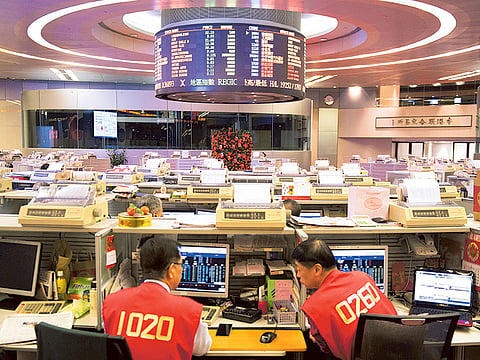Asian private equity funds pile up
But they have been returning less bang for the dollar and investors are worried

Investors keep flocking to private equity in Asia even though returns are declining. They should take heed: Payouts are likely to get worse from here, rather than better.
The hunt for yield in a low-interest world has spurred institutional investors to join the rush into the alternative asset class. Private equity firms founded by veterans of Warburg Pincus and KKR & Co. are seeking to raise at least $4.5 billion for new funds in China, in the latest sign of the region’s burgeoning appetite for nonpublic investments.
New York-based KKR, meanwhile, is targeting more than $12.5 billion for its fourth Asian fund, which would surpass the record $10.6 billion raised by China’s Hillhouse Capital Group in 2018. At the end of June, private equity firms in Asia were sitting on a record $361 billion of unspent capital, according to London-based market research firm Preqin.
Look beyond the hype
The returns haven’t lived up to the hype. Funds focused on Asia generated an internal rate of return of 12.8 per cent last year, down from 15.5 per cent in 2018, according to Preqin. That’s below what investors could have made outside the region: North American funds chalked up an IRR of 16.4 per cent in 2019 while those centred on Europe returned 18 per cent.
Even brand-name private equity shops have sputtered. Hillhouse’s $10.6 billion fund saw its IRR slip by 5.16 percentage points between September 2018 and the third quarter of 2019. Over the same period, the MSCI Asia Pacific Index dropped 3.3 per cent. KKR’s two existing Asian mega-funds have had varying success, with its older fund underperforming the broader market.
Tech gets burnt
It’s getting harder for private equity firms to realise returns by selling companies on stock markets as the world wakes up to the reality that not all hot technology start-ups will be IPO winners. That follows disappointing debuts for high-profile names such as Uber Technologies Inc. and Lyft Inc., along with the collapse of WeWork’s US share offering last year.
Much of the private-equity action in Asia has focused on China, which has also had its share of setbacks. OneConnect Financial Technology Co., a unit of Ping An Insurance (Group) Co., cut the size of its US IPO by almost half last month, while Oyo Hotels is firing thousands of staff in China and India. Like WeWork and Uber, both companies are backed by Japan’s SoftBank Group Corp.
The US-China trade war has also had a damping effect, with some private equity-invested companies finding themselves embroiled in the tensions. Facial recognition start-up Megvii Technology Ltd. delayed its IPO in Hong Kong after it was included in a US blacklist cutting off its access to key American technology.
Bytedance Inc., owner of the wildly popular video app TikTok, is now a subject of a US national security review, and is weighing the sale of a majority stake in the unit.
All that considered, it isn’t surprising that the value of private-equity backed trade sales dropped 14 per cent to $28.5 billion last year, while share sales by private equity owners slumped 27 per cent to $6.4 billion, declining for a third year to the lowest since 2013.
While the US-China phase one trade deal signed last week offers some hope of an improvement in conditions, money is still likely to keep piling up in Asian private equity. For one thing, there aren’t many better alternatives. Institutional investors need to diversify: They can’t keep all their funds in US equities, even if these have been going gangbusters for years.
But that doesn’t mean individuals need to follow suit. Private equity investments are more risky because they are illiquid and take years to pay off. Smart investors should see the ever-growing piles of dry powder as a sign of danger rather than success.
Sign up for the Daily Briefing
Get the latest news and updates straight to your inbox
